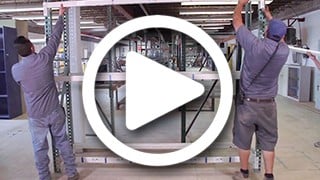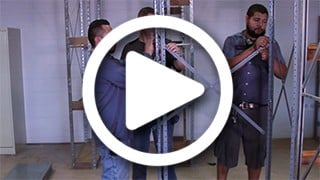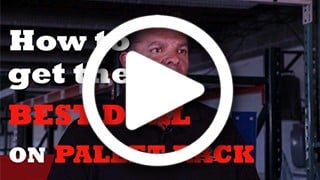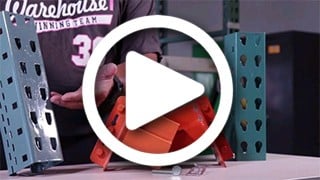Why Should I Buy Carton Flow Rack?
Converting standard selective pallet bays to carton flow racking makes carton loading and picking faster and more efficient than standard shelving.
How Carton Flow Pallet Rack Works
Most pallet rack bays can be converted to carton flow by installing kits consisting of slightly inclined lanes with tracks of rollers or skate wheels. These components fit inside the standard bay and mate with existing uprights or beams in selective pallet rack. They usually require no added supports. Carton flow storage enables split-case or low-volume full-case picking. FIFO (first in, first out) stock is most suited for this storage system.
Cartons of stock are added from the back side of the rack, then advance down the incline as each carton in the lane is emptied and removed. Stock is kept within easy reach, pickers are not required to strain to reach into the rack. The extra motions and unnecessary labor involved in repositioning cartons on standard static shelving are eliminated.
 |
| Carton flow rack systems can improve productivity by as much as 70% when compared to standard static shelving. |
A typical carton flow conversion installed in a standard pallet bay might contain 25 different SKUs depending on the size of each. In the usual configuration, each SKU occupies a single lane and the lanes may extend the full depth of the pallet rack. If a particular SKU shows greater activity than stock adjacent to it, that SKU can expand to occupy side-by-side lanes.
Overhead bays can remain configured as standard selective pallet racks. Larger palletized overflow stock can be stored overhead, then brought down by forklift for loading in carton flow lanes. The termination of each lane on the picking side may be level or forward-tilting. Tilting generally makes picking from broken cases more comfortable and efficient while a level shelf is usually employed to pick larger, full cases.
 |
| Span track, a style of carton flow, installs on pallet rack beams or in hangers that attach to beams. Span track systems consist of uprights, beams, span track lanes and sometimes hangers. |
Benefits of Carton Flow Racking
Conversion of any number of existing pallet racks to carton flow can be accomplished quickly. Here are some of the other reasons why carton flow conversion pays off:
- Carton flow stocking can produce immediate labor savings exceeding 70%. Given this productivity improvement, static storage may incur substantially higher costs over the long run than a pallet rack carton flow system.
- Carton flow keeps fast moving-stock better organized and more accessible for picking or inventory.
- Usually, more stock can be stored in a carton flow configuration than on static storage shelves occupying the same square footage.
- Because pickers and stockers are separated by the pallet rack, there’s less foot traffic and congestion. Workers are not interfering with each other.
- Inventory control is facilitated because carton stock is easily visible up the inclined lane, making counting or at-a-glance inventory easier.
 |
|
Carton flow rack is best suited to FIFO (First In, First Out) stock rotation, with each lane dedicated to one SKU. Many operations with carton flow in pallet rack store palletized cartons in the pallet rack bays above. When a carton flow lane is low, they'll break down the pallet and restock the lane. Drawbacks Drawbacks of a carton flow rack may include:
Final Word It is easy to conclude that if cost and volume justify the changeover, converting to or choosing pallet rack mounted carton flow can be a positive move for both economy, efficiency, and for health and safety of the work force. Carton flow pallet rack has many pluses with few minuses. |



